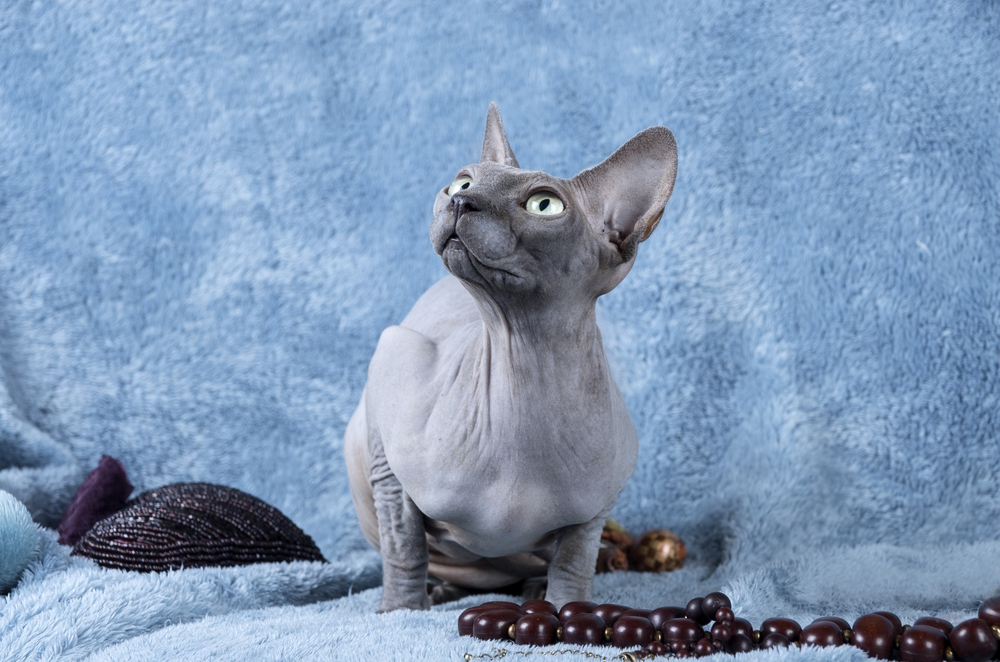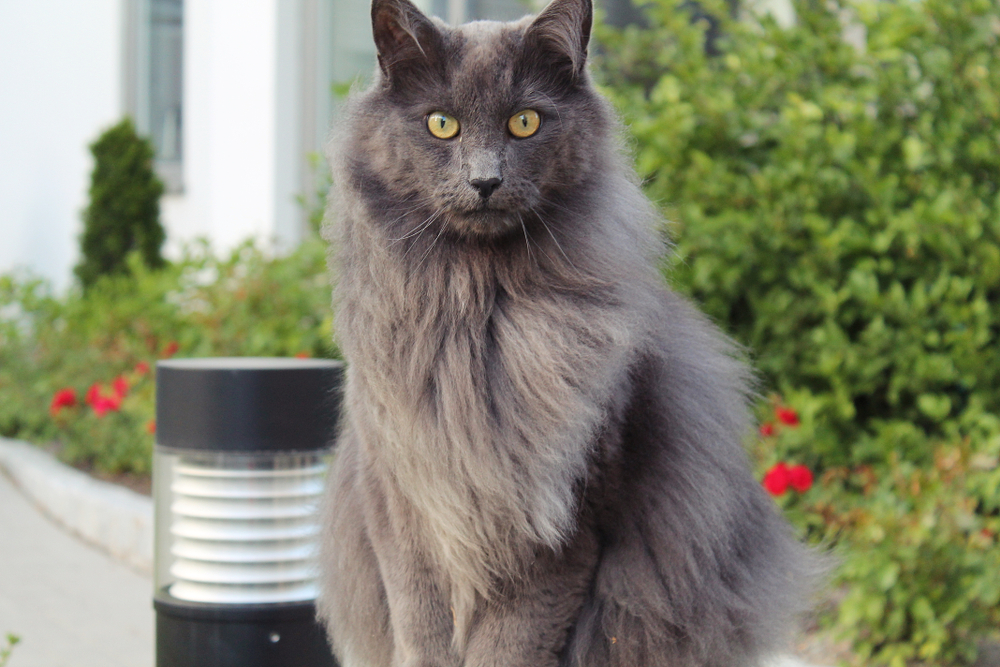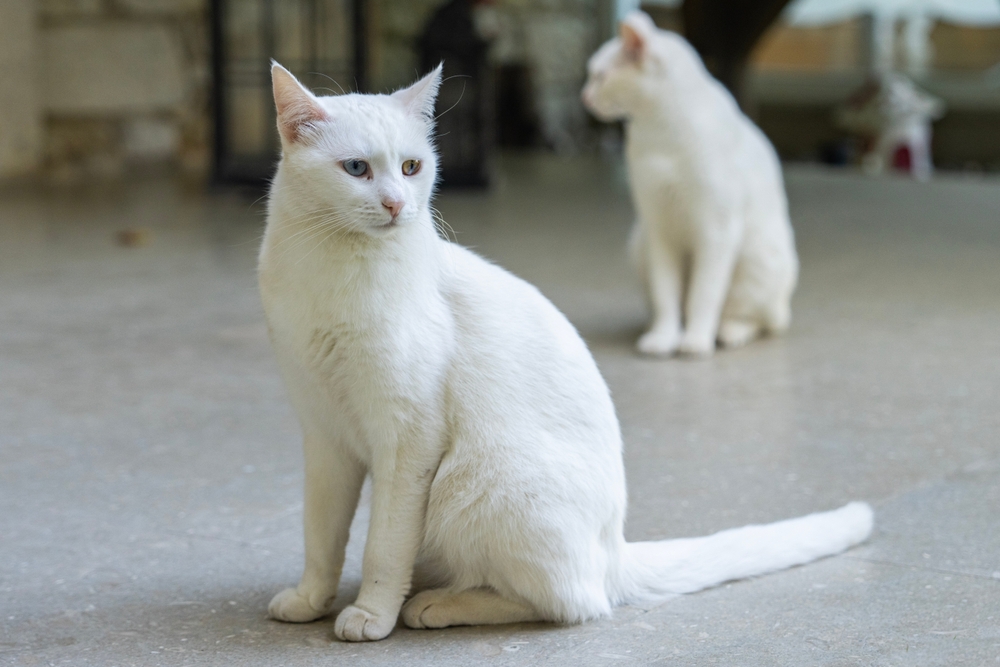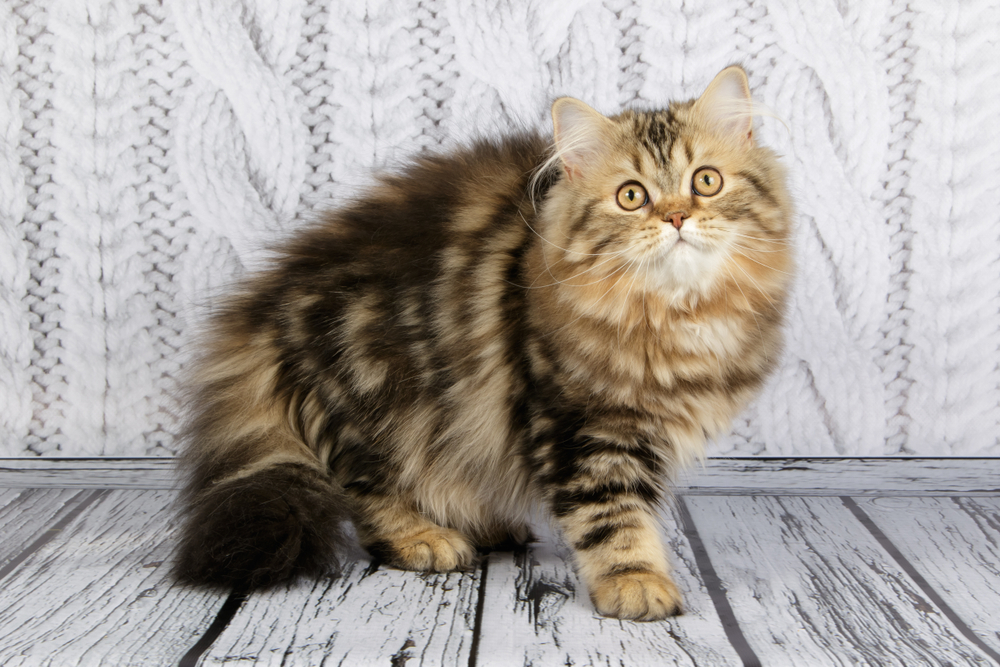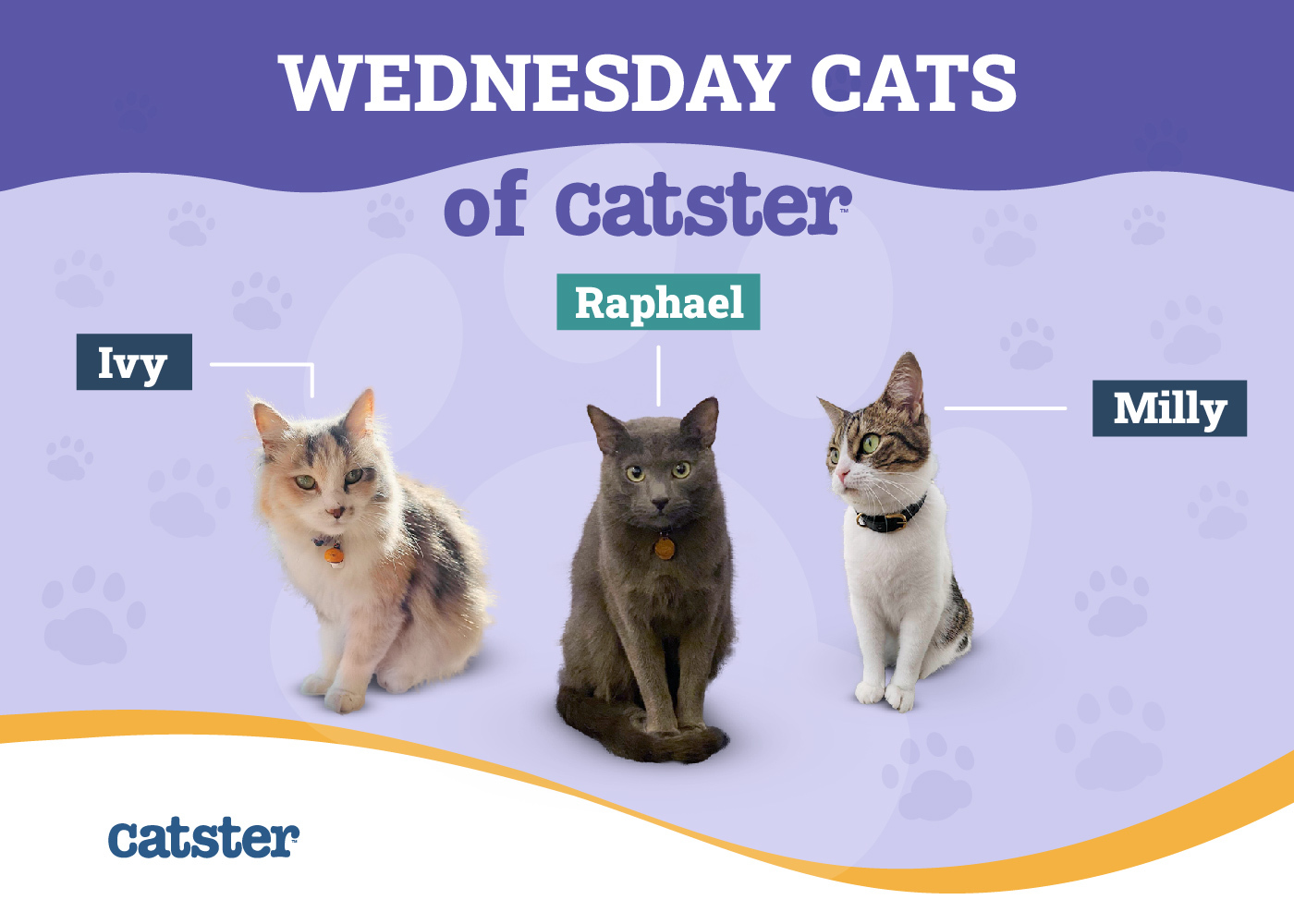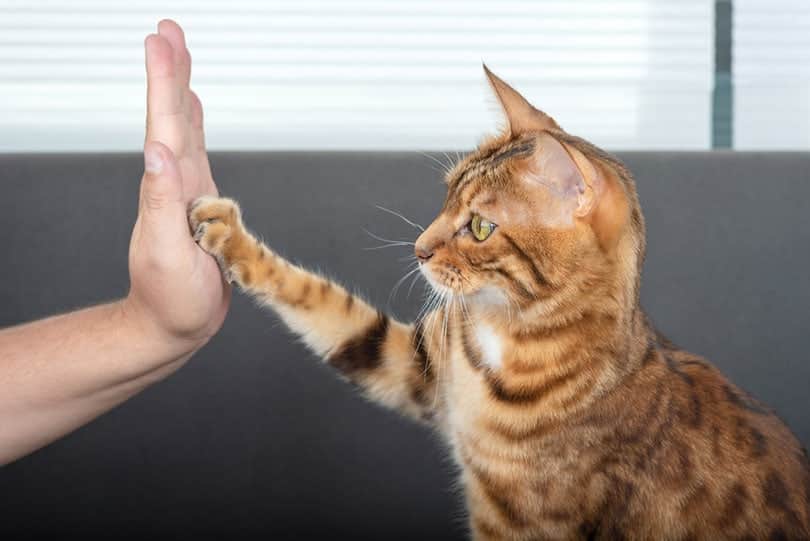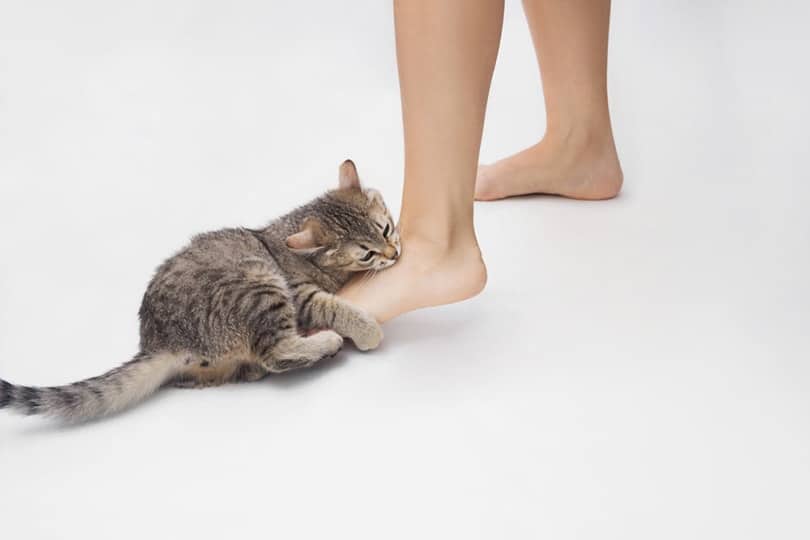Click to Skip Ahead
You can’t help but notice the Sphynx Cat. They are so different from what we may usually think about how these animals should look. While they appear hairless, they’re not. Their coats are more like a short and soft down. The breed standard allows all colors and patterns. Hence, we have the blue Sphynx Cat. This cat may be a solid color or other variations like tortoiseshell or tabby. Let’s learn a bit more about them down below.
Breed Overview
Height:
6–9 inches
Weight:
7–14 pounds
Lifespan:
10–15 years
Colors:
Blue, cream, brown, black, white, gray
Suitable for:
Active families looking for a low-shedding cat
Temperament:
Loving, intelligent, affectionate, outgoing
Other noticeable traits include the cat’s large ears and lemon-shaped eyes. Their skin has a wrinkled appearance, which makes them seem even more exotic. The breed is relatively new compared to others, such as the ancient Egyptian Mau. The blue Sphynx is an outgoing and vocal animal, and this kitty will thrive in an active household.
Blue Sphynx Cat Characteristics

The Earliest Records of the Blue Sphynx Cat in History
Accounts of hairless cats have existed since the early 1800s. However, these weren’t the cats that we now know as the blue Sphynx. The breed’s history begins later in the 1960s in Ontario, Canada. A genetic mutation resulted in a hairless feline. Early enthusiasts soon discovered the inheritance pattern.
Domestic cats have 38 chromosomes, one of which is the sex pair. The others determine different features of the animal. Each parent contributes one copy or allele to each gene. If the trait is dominant, only one of the two causes the characteristic to be present in the offspring. The shorthand is AA for two dominant alleles and Aa for one dominant and the other recessive. For a recessive trait to manifest, each parent must contribute the “a” version of the gene, making it aa.
Hairlessness is an aa characteristic. Mendelian genetics tells us that 25% of the offspring would be AA. Another 50% would be Aa, with aa making up the last 25%. Since it’s dominant, 75% of the young would have hair. Only 25% of the kittens would be hairless. That’s the bottleneck that affected the proliferation of the blue Sphynx.
Enthusiasts bred the hairless cats with other ones, including the Devon Rex. This breed has the dominant version of the hairless trait, and it took several generations to develop the Sphynx. Infertility is a problem that can occur with hairlessness, further complicating the breed’s start.
How the Blue Sphynx Cat Gained Popularity
Cats differ from dogs by the many jobs the latter filled. Canines served functional roles at first before selective breeding, which led to diversification in the work the animals did and the conformation of desirable standards. You can probably guess the Sphynx became a sensation even in the days before social media and viral videos.
The development of the breed was a joint effort between North American and European breeders. The goal was to build a diverse gene pool to reduce the chances of harmful hereditary and congenital conditions passing on to subsequent generations. That was imperative to earn formal recognition and to propel the popularity of the breed.
Formal Recognition of the Blue Sphynx Cat
The Cat Fanciers’ Association (CFA) and Fédération Internationale Féline (FIFe) formally recognized this breed in 2002. The International Cat Association (TICA) recognition came later in 2005. Formal recognition meant the creation of standards for the breed to give judges a framework for evaluating the cats in the show ring.
The CFA faults cats that can’t be handled or have hair. The FIFe has specific color groups. TICA disqualifies aggressive animals and those that are too small. The Sphynx is a sleek yet muscular animal. The cat is also known for their engaging personality, which is written into the breed standard of all organizations.
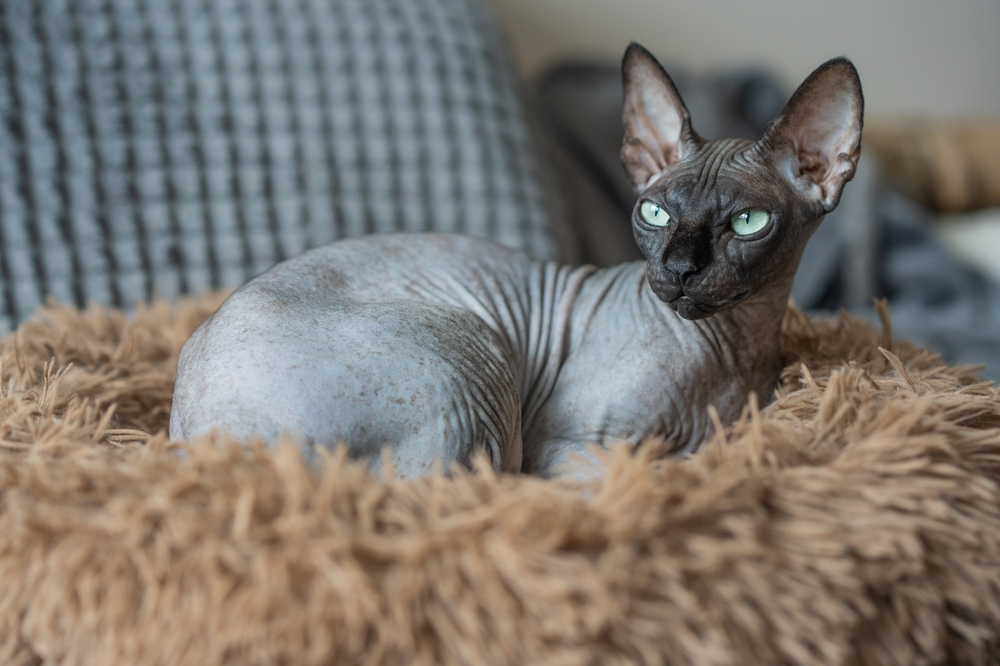

Top 3 Unique Facts About the Blue Sphynx Cat
1. The Blue Sphynx Cat Is Not Egyptian
Although the animals look like their namesake, the original breeding stock is from Canada and Minnesota.
2. The Sphynx Is the CFA 10th Most Popular Breed
Pet owners have fallen head over heels in love with the Sphynx. This honor isn’t a surprise to those who know this kitty.
3. Research Has Shown the Blue Sphynx Prefers the Company of People to Other Cats
Personality has a genetic factor. Researchers found that the Sphynx wasn’t particularly sociable with other cats. Instead, they prefer to be with people. It’s one of the most endearing traits.
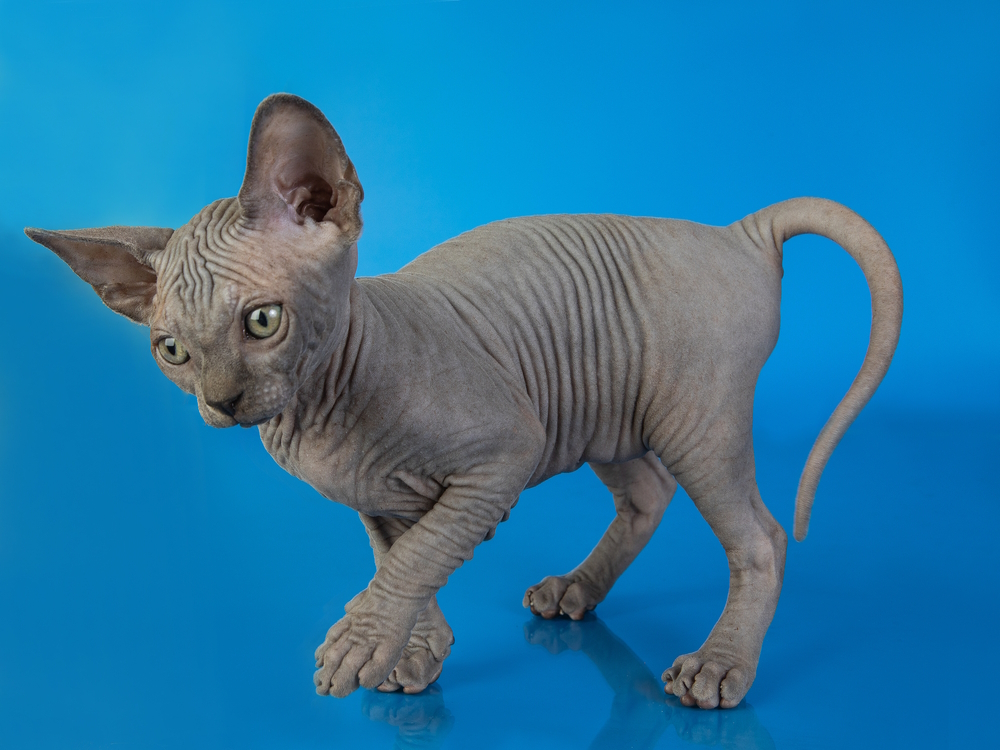

Does the Blue Sphynx Cat Make a Good Pet?
The blue Sphynx is the epitome of a people-oriented cat. They love attention and will make an excellent choice for an individual or family who wants their kitty to be part of the household. We don’t recommend this breed for anyone who can’t give them the interaction they need. That’s true of any intelligent cat. They must have mental stimulation and enrichment for their well-being.
The other consideration involves the Sphynx’s health. The animal has a heightened risk of cardiovascular disease. Therefore, you should only get a pet from a seller who conducts the recommended pre-breeding screening of their stock. DNA testing is available for some conditions. You must also monitor your pet’s heart health since problems can develop later in life.
The blue Sphnyx is a playful and energetic feline. This kitty will welcome visitors, but they may also get into trouble if they’re bored. These animals are a commitment on several fronts. Understanding your responsibility is imperative with this cat or any pet.

Conclusion
The blue Sphnyx is a striking animal with a larger-than-life personality. These cats love people and want to be a part of the action. Pet owners must understand that this cat breaks the mold for what you may think of these felines. They are curious and intelligent, making mental stimulation vital for their overall well-being, but you will have a very fulfilling relationship with your kitty if you can provide it.
Featured Image Credit: Joanna Zaleska, Shutterstock

